School bullying and family dysfunction in students of 4th and 5th grade of basic education in two educational centers in the district of Santa Marta, Colombia
DOI:
https://doi.org/10.25057/21452776.304Keywords:
bullying, family dysfunction, risk behavior, preventionAbstract
This research was conducted in order to characterize the presence of school bullying and family dysfunction in students from 8 public schools of Bogotá. We applied a descriptive research with cross design. We worked with a population of 2,259 students, of which 340 students were selected from different FDI of Educational Nuclei No. 7 and 9, with probabilistic sampling with proportional, then the subjects were selected at random and convenience. The minimum age was 8 years and the maximum of 14, with a mean of 10.2 years approx. and D.T. approximately 1.2 years. They applied the “Questionnaire for Elementary students about school climate and violence” (Ortega and Del Rey, 2001) and the APGAR - Family (Smilkstein, 1978), following validation of both tests. We found a prevalence of 30 % of school bullying , in which students and teachers participate actively or passively, and, 20% of family dysfunction characterized by troubled families in the study population; also established that both variables if correlate. These results are similar to those found in other studies in Colombia and other Latin American countries. The authors conclude that the significant presence of school bullying and family dysfunction in participating school may increase in adolescence. Recommend implement prevention programs in the framework of the 1620 Act of 2013 or “anti-bullying law” in Colombia and continue with other studies.
Author Biographies
Zoraida Ponce Jiménez, Universidad del Magdalena, Santa Marta, Colombia
Licenciada en educación
Candidata a magister en Educación, Universidad de Magdalena, Santa Marta, Colombia
Docente Departamental, SUE-CARIBE, Universidad del Magdalena, Santa Marta, Colombia
Correo electrónico: soponji@gmail.com
Carmen Elena Cucunubà Bermúdez, Universidad del Magdalena, Santa Marta, Colombia
Licenciada en educación
Candidata a magister en Educación, Universidad de Magdalena, Santa Marta, Colombia
Docente Departamental, SUE-CARIBE, Universidad del Magdalena, Santa Marta, Colombia
Correo electrónico: carcube@yahoo.es
References
Aberastury, A., et al (1971). Adolescencia. Buenos Aires: Ediciones Kargieman.
Almanza-Muñoz, J. (2004). Depresión: prevención y manejo en el primer nivel de atención. Rev. Sanid. Milit. Mex.; 58(3): 209-222
Batalis, N., Collins, K.(2005). Adolescent Death: A 15-Year Retrospective Review. Journal of Forensic Science, 50(6): 1444-1449.
Bausela H., E. (2008). Estrategias para prevenir el bullying en las aulas. Psychosocial Intervention, vol. 17, núm. 3, 2008, pp. 369-370.
Bandura, A., Pastorelli, C., Barbaranelli, C. &Caprara, G. (1999). Self-efficacy pathways to childhood depresión. Journal of Personality and Social Psychology. Vol. 76, No. 2, 258-269, Disponible en https://www.uky.edu/~eushe2/Bandura/Bandura1999JPSP.pdf
Bellissimo, A. McFarlane, A., & Norman, G. (1995). Family structure, family functioning and adolescent well-being: the transcendent influence of parental style. Journal of Child Psychology & Psychiatry, 36(5): 847-64, Disponible en http://www.ncbi.nlm.nih.gov/pubmed/7559849
Borges, G., Medina-Mora, M.López-Moreno, S. (2004). El papel de la epidemiología en la investigación de los trastornos mentales. Salud Pública Mex;46:451-463. Disponible en http://www.scielosp.org/pdf/spm/v46n5/a10v46n5.pdf
Brown, G. W, Harris, T. O. & Hepworth, C. (1994). Life events and endogenous depression: A puzzle reexamined. Archives of General Psychiatry, 51, 525-534.
Caurcel, M.(2009). Estudio evolutivo del maltrato entre iguales desde la percepción y el razonamiento sociomoral de los implicados. Tesis Doctoral. Granada (España). Disponible en https://www.researchgate.net/publication/46590861_Estudio_evolutivo_del_maltrato_entre_iguales_desde_la_percepcion_y_el_razonamiento_sociomoral_de_los_implicados
Creighton, S.(2004). Prevalence and Incidence of Child Abuse: International Comparisons. NSPCC Information Briefing. Londres, NSPCC Research Department.
Creighton, S. (2004). Prevalence and Incidence of Child Abuse: International Comparisons. NSPCC Information Briefing. Londres, NSPCC Research Department.
Del Rey R., Ortega, R. (2008). Bullying en países pobres: relevancia y coexistencia con otras formas de violencia. U. de Almería. Almería. España. Pp.39-50, Disponible en http://redalyc.uaemex.mx/redalyc/src/inicio/ArtPdfRed.jsp?iCve=56080104
Dos Santos-Palazzo, J., Béria, J., Alonso-Fernández, F., Tomasi, E. (2001). Depresión en la adolescencia en centros de atención primaria: importancia de un problema oculto en salud colectiva. Atención Primaria, 28 (8): 543-9. Disponible en http://www.elsevier.es/es-revista-atencion-primaria-27-articulo-depresion-adolescencia-centros-atencion-primaria-13023840
ECPAT (2005). Violence against Children in Cyberspace. A Contribution to the UN Secretary-General’s Study on Violence against Children. Bangkok, ECPAT International.
Engels,R., Vermulst, A., Dubas, J., Bot,S., Gerris, J. (2005). Long-term effects of family functioning and child characteristics on problem drinking in young adulthood. Eur Addict Res, 11(1):32-7, Disponible en http://www.ncbi.nlm.nih.gov/pubmed/15608469
Ferrel, R., Cuan, A., Londoño, Z., Ferrel, L. (2012). Factores de riesgo y protectores del bullying escolar en estudiantes con bajo rendimiento académico de 5 Instituciones Educativas de la Unidad Administrativa Escolar N°5 del Distrito de Santa Marta, Colombia. En prensa.
Franco, S. (2003). A Social-Medical Approach to Violence in Colombia. American Journal of Public Health, 93: 2032-2036, Disponible en http://www.ncbi.nlm.nih.gov/pmc/articles/PMC1448146/
García, L. (2001). Supervisión parental y el consumo de drogas en la adolescencia. Disponible en http//www.hojasinformativas de los psicólogos de las palmas.37.
Garaigordobil, M. (s.f.). El maltrato entre iguales: definición, prevalencia, consecuencias, identificación e intervención. Disponible en http://www.gautena.org/infotoki/descargas/articulo Garaigordobil.pdf.
Garaigordobil, M., Oñederra J. A. (2009). Acoso y violencia escolar en la comunidad autónoma del País Vasco. Universidad del país Vasco. Psicothema. Vol. 21, Nº1, pp. 83-89. Disponible en http://www.redalyc.org/pdf/727/72711818014.pdf
Garaigordobil, M., Oñederra, J. (2010). Los centros educativos ante el acoso escolar: actuaciones del profesorado, acciones sancionadoras y actividades de prevención. Información Psicológica,99, 4-18. Disponible en http://www.sc.ehu.es/ptwgalam/art_completo/2010/6.%20IP%20Bullying.pdf
Geiger, B., Fischer, M. (2006). Will Words Ever Harm Me? Escalation from Verbal to Physical Abuse in Sixth-grade Classrooms.Journal of Interpersonal Violence. 21(3): 337-57, Disponible en http://www.ncbi.nlm.nih.gov/pubmed/16443595
Groenewald, P., et al (2001). Cape Town Mortality. Part I: Cause of Death and Premature Mortality. South African Medical Research Council, University of Cape Town.
Hernández, R., Fernández, C., Baptista, P. (2006). Metodología de la Investigación: Diseño Metodológico (4ª. Ed.). Santa Fe de Bogotá, Colombia: McGraw Hill.
Human Rights Watch (2001). Scared at School: Sexual Violence against Girls in South African School. Nueva York, Human Rights Watch.
Huerta-González, J. (2000). Estudio de la salud familiar. En: Colegio Mexicano de Medicina Familiar, editor. Programa de actualización continua en medicina familiar. Libro 1. Distrito Federal, México: Intersistemas; p. 5-69.
Krauskopf, D. (1994). Adolescencia y Educación. San José: Editorial EUNED.
Lemard, G., Hemenway, D. (2006). Violence in Jamaica: an analysis of homicides 1998-2002. Injury Prevention, 12(1): 15-18, Disponible en http://www.ncbi.nlm.nih.gov/pmc/articles/PMC2563489/
Martínez, J., Fuertes, A., Ramos, M. y Hernández, M. (2003). Consumo de drogas en la adolescencia: importancia del afecto y la supervisión parental. Psicothema,15 (2):161-166, Disponible en http://www.redalyc.org/pdf/727/72715201.pdf
Merino González, J. (2008). El acoso escolar –bullying, una propuesta de estudio desde el análisis de redes sociales (ARS). Revista d ́estudis de la violencia. Núm. 4, enero/marzo 2008. Disponible en www.icev.cat
Miller,T., et al (2001). Costs of Juvenile Violence: Policy 338 implications. Pediatrics,107: 3-1
Minuchin, S, Fishman, H. (1985). Técnicas de terapia familiar. Barcelona: Paidós.
Oliveros D., M., Figueroa A., L., Mayorga R., G., Cano U., B., Quispe A., Y., Barrientos A., A. (2008). Violencia escolar (bullying) en colegios estatales de primaria en el Perú. Rev. Perú. pediatr. 61 (4), Disponible en http://www.scielo.org.pe/pdf/afm/v70n4/a05v70n4
Olweus,D. (1998). Conducta de acoso y amenaza entre escolares. 4°edición. Madrid: Morata, S.L
Olweus, D. (1984). Aggressors and Their Victims: Bullying at School.In: Frude, N.G., Gault, H. (Eds). Disruptive Behavior in Schools. Nueva York: Wiley & Sons, págs. 57-76.
Organización Mundial de la Salud (2005). Análisis realizado para el Estudio por la Encuesta Mundial sobre Salud Escolar. Disponible en http://www.cdc.gov/gshs o http://www.who.int/school youth health/gshs.
Ortega y Del Rey(2001). Cuestionario para alumnos de primaria sobre clima escolar y violencia. Disponible en http://www.deciencias.net/convivir/cuestionarios/alum_convivir/3.Alum_primaria_violencia%28Ortega_DelRio-2001%295p.pdf
Ortega, R., Del Rey, R. (2001). Estudio internacional sobre clima escolar y violencia. Cuestionario de Primaria. Disponible en https://convivencia.files.wordpress.com/2012/05/alum_primaria_violenciaortega_delrio-20015p.pdf
Palosaari, U., Aro, H., Laippala, P. (1996). Parental divorce and depression in young adulthood: adolescents' closeness to parents and self-esteem as mediating factor. Acta Psychiatrica Scandinavica, Vol. 93, N 1: 20-26, Disponible en http://onlinelibrary.wiley.com/doi/10.1111/j.1600-0447.1996.tb10614.x/abstract
Pinheiro, P. (2005). Informe mundial sobre la violencia de niños y niñas. UNICEF.
Price, I., Lavercombe, L. (2000). Depression in early adolescence: relation to externalizing and internalizing behaviour. Percept Mot Skilss, 90: 723-730.
Runyan, D., et al (2002). Maltrato y descuido de los menores por los padres u otras personas a cargo. En: Krug EG et al. (Eds) (2002). Informe mundial sobre la violencia y la salud. Washington DC, Organización Panamericana de la Salud, págs. 63-94.
Smilkstein G. (1978). The family APGAR: Aproposal for a family function test and its used by physicians. Journal FamPract, 6: 12-31.
Smith, P. K., Morita, Y., Junger-Tas, J., Olweus, D., Catalano, R., Slee, P. (1999). The Nature of School Bullying. A cross-national perspective. London: Routledge.
South African Police Service (2003). Annual Report of the National Commissioner of the South African Police Service,1-04-2002 to 31-03-2003. Pretoria, South African Police Service.
Tolstoi, L. (1998). Dinámica familiar. En: Huerta-González JL. La familia en el proceso de salud-enfermedad. San Luis Potosí: Tangamanga, p. 37-42.
Trautmann M., A. (2008). Maltrato entre pares o “bullying”. Una visión actual. Rev. Chil. Pediatr. 2008; 79 (1): 13-20, Disponible en http://www.scielo.cl/scielo.php?script=sci_arttext&pid=S0370-41062008000100002
United Nations Secretary-General’s Study on Violence against Children (2005). Regional Desk Review: North America. Disponible en: http://www.violencestudy.org/r27.
WHO (2006). Global Estimates of Health Consequences Due to Violence against Children. Background Paper to the UN Secretary-General’s Study on Violence against Children. Ginebra, Organización Mundial de la Salud.
Ybarra, M., et al (2004). Online Aggressor/Targets, aggressors, and targets: acomparison of associated youth characteristics. Journal of child psychology and psychiatry, 5(7): 1308-1316, Disponible en http://www.unh.edu/ccrc/pdf/jvq/CV75.pdf
How to Cite
Downloads
Languages:
esDownloads
Published
Issue
Section
License
Copyright (c) 2020 Psicoespacios

This work is licensed under a Creative Commons Attribution-NonCommercial-ShareAlike 4.0 International License.
| Article metrics | |
|---|---|
| Abstract views | |
| Galley vies | |
| PDF Views | |
| HTML views | |
| Other views | |





